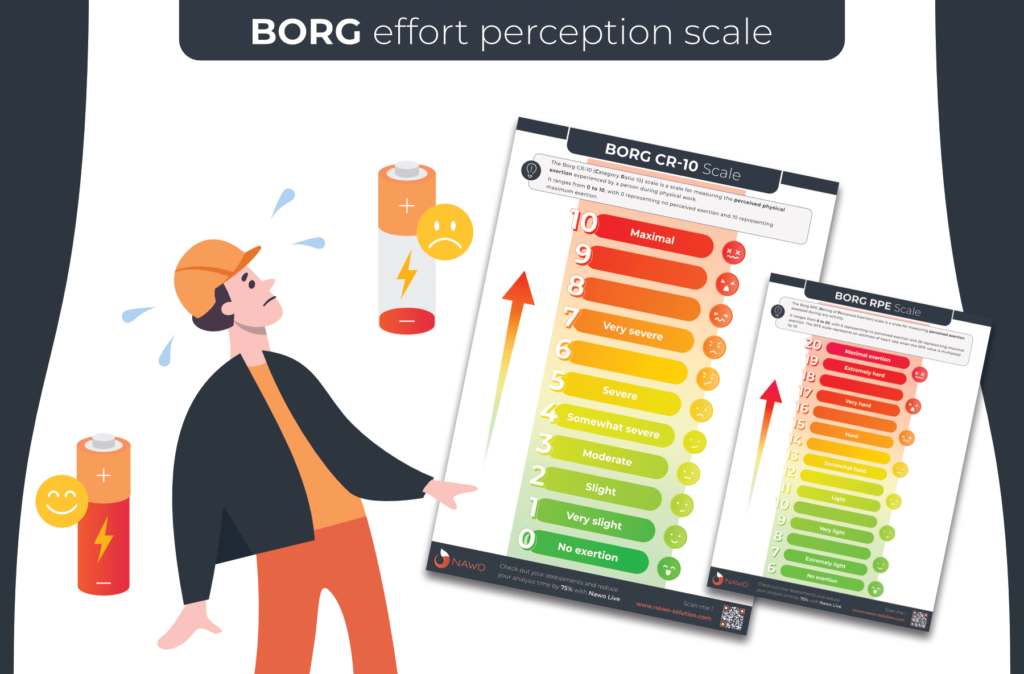Borg scale
The Borg scale, created by Professor Gunnar Borg in 1970, serves as a quantitative instrument for the subjective evaluation of exertion during physical tasks.

The Borg scale, created by Professor Gunnar Borg in 1970, serves as a quantitative instrument for the subjective evaluation of exertion during physical tasks.

We distinguish two types of scale developed by Borg: the Rating Perceived Exertion (RPE) scale and the Category Ratio 10 (CR-10) scale.
The Borg CR-10 scale
The CR-10 scale was developed based on the observation of non-linear changes in physiological parameters in response to physical exertion. This scale ranges from 0 to 10.
In ergonomics, the Borg CR-10 scale is a crucial instrument for quantifying physical task intensity, particularly when standard force measurements aren’t feasible or safe.
The Borg RPE scale
The RPE was constructed to be linearly related to heart rate and oxygen consumption during physical work, taking into account the duration and environment of the work. This scale ranges from 6 to 20.
The CR10 was constructed after the observation of certain physiological variables such as lactacidaemia. The results showed that the physiological data do not evolve in a linear way during physical work but rather adopt an exponential type of increasing function. This type of scale also allows for inter-individual comparisons, quantitative assessment of perceived exertion and mathematical description.
The first draft of the CR-10 was proposed by Borg in 1973. This scale still has 21 levels with only 7 levels of verbal annotations. This scale evolved into its quasi-definitive form in 1982 and again in 1998.
The equation for determining the intensity of perception :
R = a + c.Sn
R: perceptual intensity (Response);
a: basic subjective light intensity;
c: constant;
S: intensity of the imposed stimulus;
n : 1.6
The perception of physical effort The RPE (Ratings of Perceived Exertion) scale provides a subjective assessment of perceived effort. In 1990, Borg presented an evolution of the original 1961 scale into 15 levels (from 6 to 20). Strong correlations were found between the subjective values of perceived exertion or RPE and heart rate.
The RPE index seems to be more of a subjective estimate of the hardness of physical work rather than of its intensity during physical work of moderate effort intensity.
Nawo Live is your physical activity risk assessment tool for identifying risk factors for musculoskeletal disorders (MSDs).
In Nawo Live, automate and evaluate all biomechanical risk factors using reference methods (RULA, REBA, NIOSH, etc.).
Nawo Live guarantees you a reliability of the measurements acquired by our systems, including :

About us
Nawo is a brand of HRV Simulation
Copyright 2024 Nawo Solution © All Rights Reserved Legal Notices